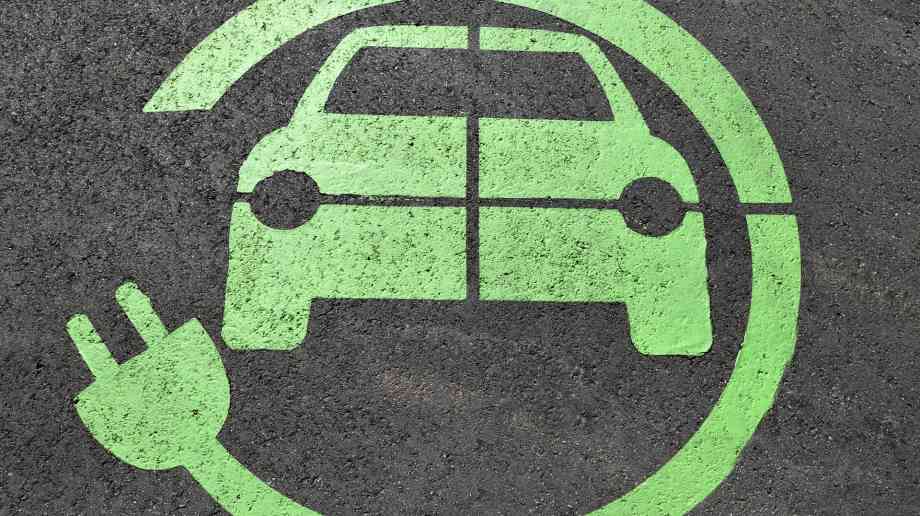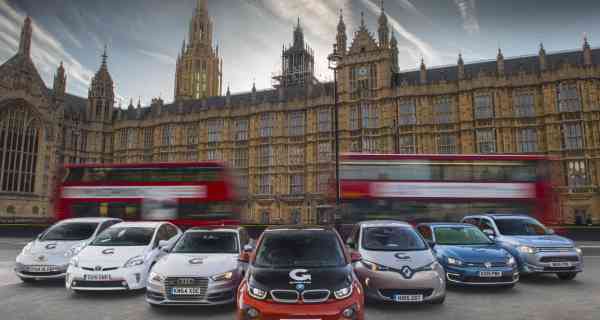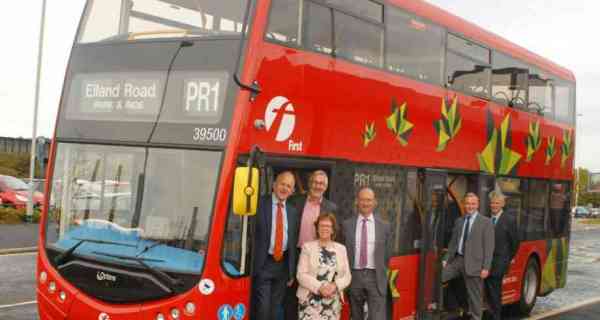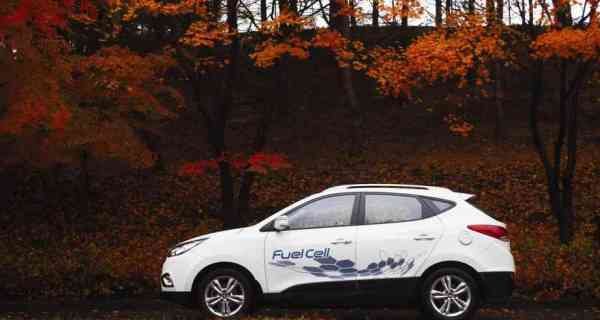Sue Robb of 4Children talks to Julie Laughton and Alison Britton from the Department for Education about the role of childminders in delivering the 30 hours free entitlement.

Flying the flag for cleaner fleets
As part of a wider Government Business Top 10 series, In Focus details the top 10 local authorities who are making great strides to lower their carbon footprint by slim-lining and greening their fleets
At the Smarter Travel Conference in Milton Keynes last month, Roads Minister Jesse Norman announced further funding for local authorities to install chargepoints in residential areas where cars are parked on the street. As part of the government’s commitment to reduce carbon emissions from transport and its continual aim for nearly all cars and vans to be zero emission by 2050, the announcement was the latest in a long line of efforts by the Department for Transport to cut air pollution and lower emission levels through changing our driving habits.
At the start of 2016, Go Ultra Low announced the four UK cities who become international pioneers of green vehicle technology, after winning a share of £40 million to boost the number of plug-in cars on their roads. The winning Go Ultra Low Cities – Nottingham, Bristol, Milton Keynes and London – were heralded as examples of the the UK’s thriving green vehicle sector and released proposals to revolutionise electric motoring in their regions.
With Whitehall challenged on needing to do more to cut the high levels of air pollution in the UK, and local authorities themselves continuing to seek ways in which they can make savings and become more efficient, the idea of electric motoring no longer seems quite so futuristic. Organisations up and down the country, including councils of all sizes, have adapted their fleets and set low emission targets.
While much more needs to be done to encourage greener driving, this Top 10 list celebrates the local authorities who have pledged and pursued greener driving measures in the last few years and are leading the way in creating a more sustainable UK in which to live and travel.

1 - Oxford City Council
In October this year, Oxford City Council and Oxfordshire County Council released a joint proposal to introduce a Zero Emission Zone in Oxford city centre. Thought to be the world’s first Zero Emission Zone, the proposal would ban emitting vehicles from the city centre in phases, starting with some vehicle types and a small number of streets in 2020 and all vehicle types across the whole city centre in 2035. To highlight the impact that such measures would have, Oxford City Council predicts that the city centre’s most polluted street, George Street, would see a 74 per cent reduction in toxic nitrogen dioxide (NO2) levels by 2035.
Oxford City Council, which proclaims itself as a cycling city, is leading the way in seeking further powers to tackle air pollution in the region, vocally at least. Following the government’s Draft Air Quality Action Plan in June, the council urged the government to introduce a scrappage scheme to encourage drivers to take high-emitting vehicles off the road and fund enhanced subsidies to encourage the uptake of ultra-low emission vehicles. More recently, Bob Price, leader of Oxford City Council, wrote to Chancellor Philip Hammond asking him to increase vehicle excise duty on new diesel vehicles from April 2018, and then use the money raised to help fund a diesel scrappage scheme for those on low incomes. The scheme would see drivers financially compensated for scrapping their diesel vehicle and replacing it with a more economically-friendly version.
Holding Go Ultra Low Company status, the council currently has 17 electric vehicles in its fleet, along with nine electric bikes and 22 hybrid electric vehicles, with plans to purchase more. Furthermore, the council’s recently-published draft Vision 2050 set out plans to create accessible cycling routes across the city to help tackle congestion and reduce air pollution, while it has also begun a programme to install nearly 100 electric vehicle charging stations in Oxford’s residential streets to help people go electric.
2- Dundee City Council
Alongside the announcement of the first four Go Ultra Low cities in January 2016, the Office for Low Emission Vehicles also announced £5 million of funding for four other regions to kick-start a country-wide clean motoring revolution. Even prior to the OLEV investment, Scottish councils generally topped lists for having the most electric vehicles on their fleet. According to a Intelligent Car Leasing study, Dundee City Council had the highest number of purely electric vehicles, with 38 in local operation during the last quarter of 2014. The council was then one of the secondary four regions receiving government funding and has since focused on greening its fleet and transport systems even further.
Dundee has put an Air Quality Action Plan (AQAP) in place which aims to improve air quality in the areas of concern by exploring the provision of Park and Ride facilities, developing cycling strategies (pledging five per cent of transport funding towards cycling), installing electric charging facilities in car parks (investing £600,000 for new EV chargers in September 2017 and creating electric vehicle-only parking bays) and developing a fleet management plan to improve fuel efficiency are part of the proposals.
In addition to this, Dundee City Council has also implemented ECO STARS Dundee, a free environmental recognition scheme which rates individual vehicles and overall fleet operations on their levels of environmental performance. The scheme has been set up to help fleet operators improve efficiency, reduce fuel consumption and emissions in order to improve local air quality while making cost savings.
3 - Nottingham City Council
Alongside London, Milton Keynes and Bristol, Nottinghamshire and Derby councils pledged to use their £6.1 million of OLEV funding to install 230 chargepoints and offer ULEV owners discount parking and access to over 13 miles of bus lanes along key routes across the city, as part of a wider attempt to support the anticipated growth of 8,000 new ULEVs, including both electric and plug-in-hybrid vehicles, in Nottingham.
Since introducing a Workplace Parking Levy which incurs a charge on employers who provide parking at work, Nottingham City Council has been able to reinvest into and extend the NET tram network, which now has more than 30 trams, and introduce 56 electric buses serving the city’s ‘Link’ network. So far, the council has 20 ultra low emission vehicles in its fleet.
Having met its climate change target four years ahead of schedule, Nottingham City Transport has unveiled a new £17 million double-decker fleet of buses that will be powered by biomethane, believed to be the ‘greenest buses on the road’, and has also revealed plans to ‘green’ its taxi fleet and make the service a customer-friendly part of the city’s world-class transport network. The council has successfully bid for £702,000 of money from the Office of Low Emissions Vehicles which will see 32 connection points installed at eight locations around the city from early next year, which constitutes wider plans to make taxi drivers more willing to convert their vehicles to low-emission.
4 - Leeds City Council
Since being identified as an area that would require a clean air zone by 2020, Leeds City Council has switched 70 of its fleet over to zero or ultra-low emission electric vehicles and has extended its free parking offer to owners of low emission vehicles at all council-run car parks or on‑street parking bays until at least March 2018.
Additionally, the council is currently planning the creation of an alternative fuel station, which would allow them to convert 180 fleet vans to Compressed Natural Gas (CNG), including 70 refuse collection trucks. Like many other local authorities, Leeds City Council has announced the introduction of free parking for ultra low emission vehicles.
Leeds City Council is leading the way for electric bus innovation, pledging in December 2016 to invest £71 million to provide a fleet of 284 low-emission buses to the city of Leeds by 2020. It is reported that the move would improve air quality in the city by reducing nitrogen oxides and dioxides emissions by 87 per cent. In addition to this, only last month First Leeds launched its trial of a new, following a successful trial in York.
The zero-emission and fully electric ‘Metrodecker EV’ has the capacity to carry 99 passengers and has a range of nearly 150 miles from one overnight charge, and is being trialled as part of First Leeds’s commitment to investing £71 million in 284 new ultra-low emissions buses for the city.

5 - Bristol City Council
In March last year, former Bristol Mayor George Ferguson signed up to a package of measures which aims to have 5,000 more electric vehicles on its roads by 2020. Having received £7 million from the Office for Low Emission Vehicles, Bristol City Council pledged as part of its Go Ultra Low city status to offer residents free residential parking for ULEVs, access to three carpool lanes in the city, over 80 rapid and fast chargers across the city and a scheme encouraging people to lease a plug-in car for up to four weeks to help them better understand the range of benefits that electric vehicles bring.
Like Leeds City Council, the Bristol city region has pursued greening its bus fleet. In August, Marvin Rees, current Mayor of Bristol, welcomed a further £4.79 million fund that could see a fleet of more than 100 new low-emission buses powered by gas introduced in the next few years. The new buses, which could start running by 2019, will help Bristol make progress in reducing harmful air pollution to meet legal limits and will help introduce 110 new gas powered buses, 30 of which will be introduced into MetroBus services. A month previously, more than 4,000 residents signed a petition in support of rolling out a clean air zone in Bristol.
6 - Milton Keynes Council
As part of the Go Ultra Low city funding, Milton Keynes, in which the first Nissan Leaf electric vehicle was launched, received £9 million to open a city centre Electric Vehicle Experience Centre and open up all 20,000 parking bays for free to electric vehicles and co-brand bus lanes as low emission lanes giving plug-in vehicles the same priority at traffic lights as local buses. In July this year, the aforementioned UK first EV Experience Centre opened it's doors to the public, offering local residents the opportunity to ask any questions about how much electric vehicles cost, where to buy, how to charge a vehicle and try one for themselves.
A council report in October 2016, ten months after the funding announcement, revealed that Milton Keynes had witnessed a tripling of the use of electric vehicles across the region, thanks to the roll-out and implementation of low-emission infrastructures in the city. In fact, the council claims that the number of electric vehicles being used in Milton Keynes shot from 220 in July to 661 by the end of September 2016.
7 - Hackney Council
Hackney Council supports the principles of the Mayor of London's ultra low emissions vehicle delivery plan, particularly supporting the 50 per cent ultra-low emission vehicles target in London car club fleets by 2025, which matches its own target.
With London announced as one of the winners of the Office for Low Emission Vehicles Go Ultra Low city scheme, awarded £13 million funding to drive the uptake of ultra low emission vehicles for from 2016 to 2020, Hackney, alongside the London boroughs of Islington and Tower Hamlets, is leading the City Fringe Neighbourhood of the Future. The scheme has committed to delivering at least six electric streets, as well as electric vehicle priority for servicing and delivery, motorbikes, pay and display and residential parking.
The council was also awarded £380,000 of funding from the Mayor of London's Air Quality Fund in 2015 to assist with the greening of the fleet. Nearing the middle of the programme, the council remains on target to add an additional 35 electric vehicles to create a fleet of over 50 electric cars and vans, as well as installing 15×7KW and 20× 24volt electric charger on council sites (13 of which have already been successfully installed), whilst exploring home and estate charging options in the process.
8 - Southampton City Council
Part of Parliament’s plan to improve air quality, Southampton is one of five UK cities to implement a Clean Air Zone by 2020, now 2019, to discourage most polluting vehicles entering the city through the levying of a penalty charge. The subsequent Clean Air Strategy for Southampton 2016-2025 highlighted Southampton City Council’s plans to improve transport and freight delivery systems through efficient infrastructure; increase the uptake of new and innovative technologies; and increase the uptake of public transport, cycling and walking.
The council has also pledged to have 20 per cent of its fleet electric by 2020 by exchanging vehicles that need replacing for electric ones.
9 - Aberdeen City Council
Scotland’s first hydrogen taxi, a Hyundai ix35 hydrogen fuel cell car, is to begin a one year pilot in Aberdeen after receiving a private hire taxi licence by Aberdeen City Council in September. The taxi, which forms part of the Aberdeen Region Hydrogen Strategy and Action Plan 2015-2025 which plans to trial a range of vehicles with different users across the region, joins a fleet of 10 buses, 14 cars (including the taxi) and four vans in the city.
This follows the success of the council’s flagship hydrogen programme which introduced H2 vehicles to the city's car club, making the cars available for public use on a pay-as-you-go basis. Aberdeen City Council was the first in Scotland to add electric cars to its fleet and, at the time, had the largest electric fleet of any UK car club.
The council also allowed residents owning electric vehicles to charge their electric vehicles at no cost apart from the on-street or car park charge, with the council,absorbing the cost, in an attempt to incentivise and stimulate interest in greener vehicles.

10 - North East Lincolnshire
Back in February, North East Lincolnshire Council, in partnership with ENGIE, took delivery of 11 new Nissan eNV200 electric vehicles, forming part of its fleet covering security and neighbourhood operations. The vehicles, which are more cost effective and are expected to have a much longer lifespan and a greater payload capacity than their diesel counterparts, will be used primarily for frontline council operations such as waste services, grounds maintenance,and pollution control, as well as security services, run by ENGIE. The council has also purchased some of the eNV200 Combi vehicles which have been adapted to accommodate wheelchair users and vulnerable children.
North East Lincolnshire Council has also set a target of becoming the UK energy capital by 2032, launching RenewNEL, an umbrella brand for all energy-related council projects.
This article first appeared in the Government Business In Focus fleet supplement.
Company Focus
Just Lanyards is a subsidiary name of Gifts 2 Impress Limited, who have been trading for over 25 years, we therefore pride ourselves in having endless experience covering all aspects of the promotional merchandise industry.
Event Diary
UKREiiF has quickly become a must-attend in the industry calendar for Government departments and local authorities.
The multi-award-winning UK Construction Week (UKCW), is the UK’s biggest trade event for the built environment that connects the whole supply chain to be the catalyst for growth and positive change in the industry.
Supplier Profiles
Geo Energy
At GeoEnergy Design, we're on a mission to disrupt the traditional way heating and cooling ha
Latest Features
Professor Harith Alani, director of the Knowledge Management Institute at the Open University explains how AI can be used for good and bad.
Alex Lawrence, head of health & social care, techUK sets out techUK’s Five Point Plan for CareTech.












